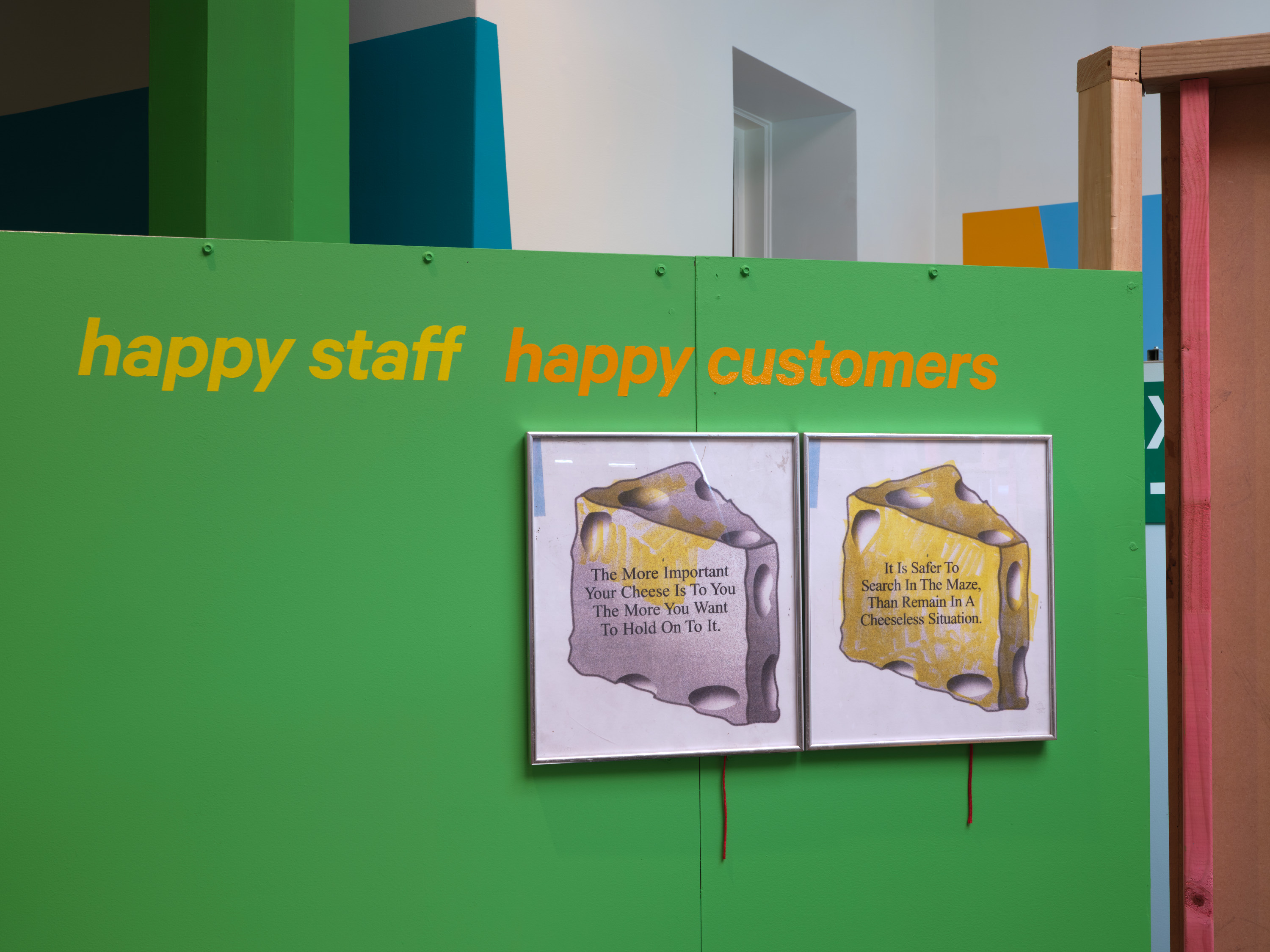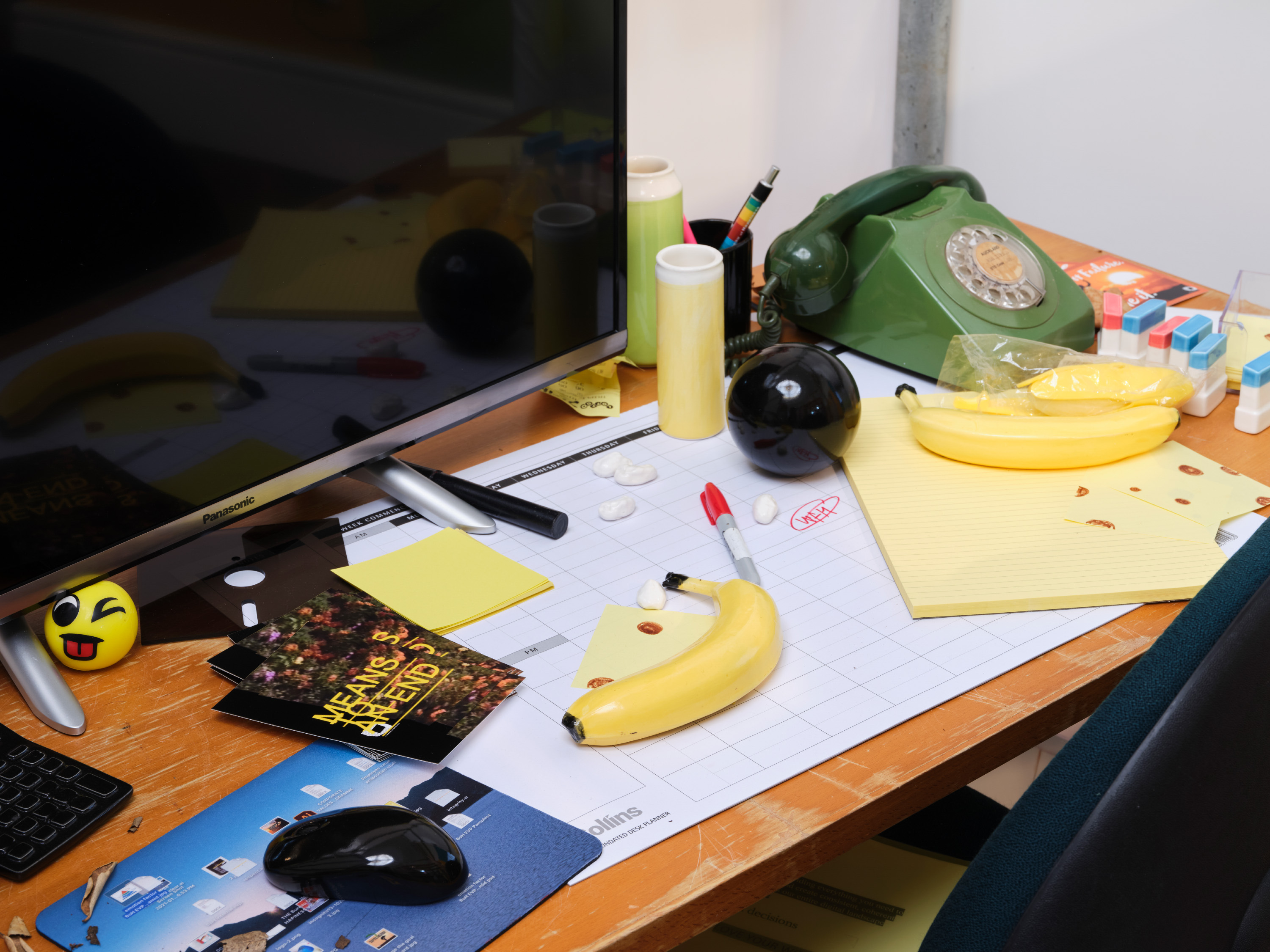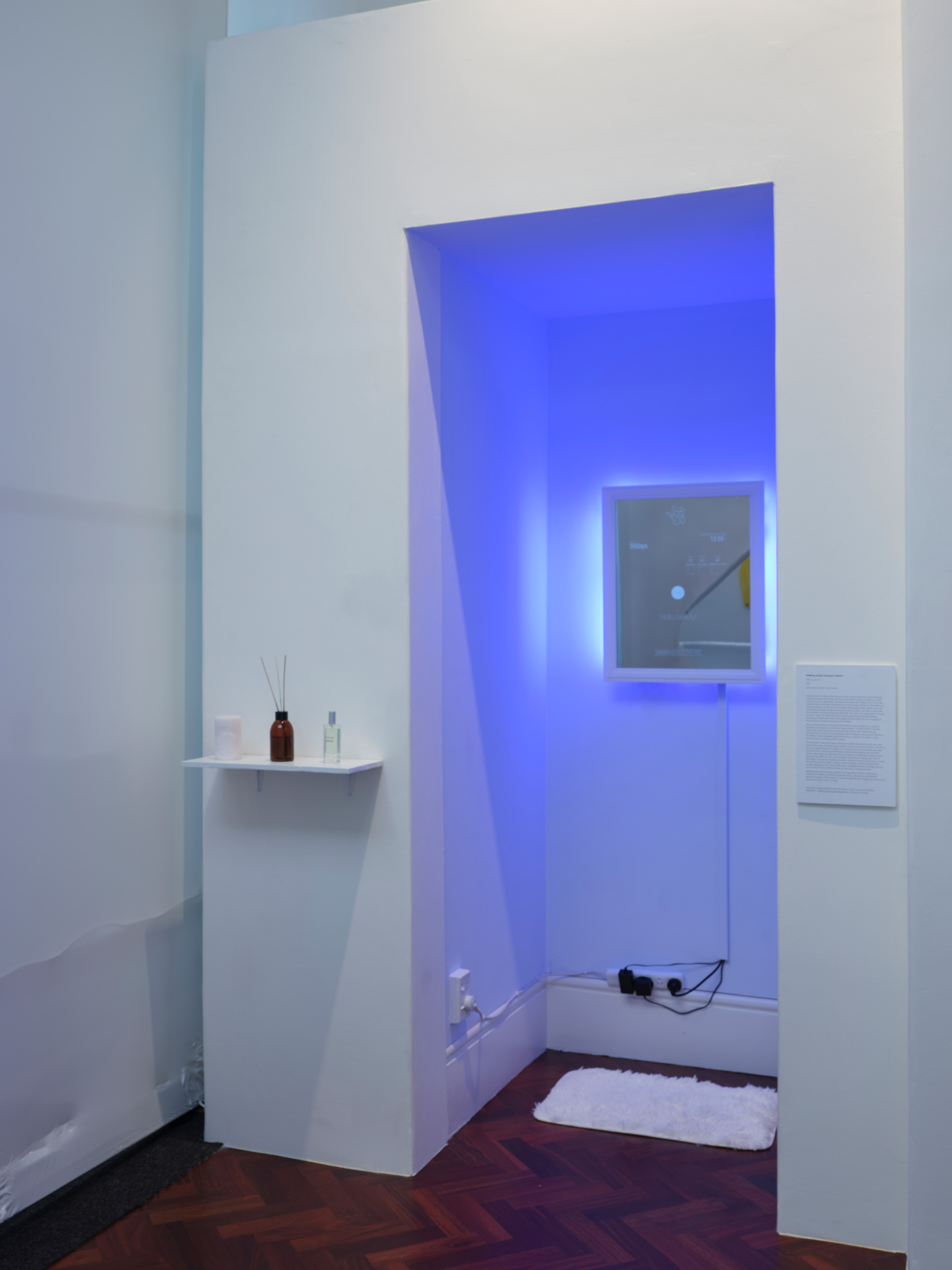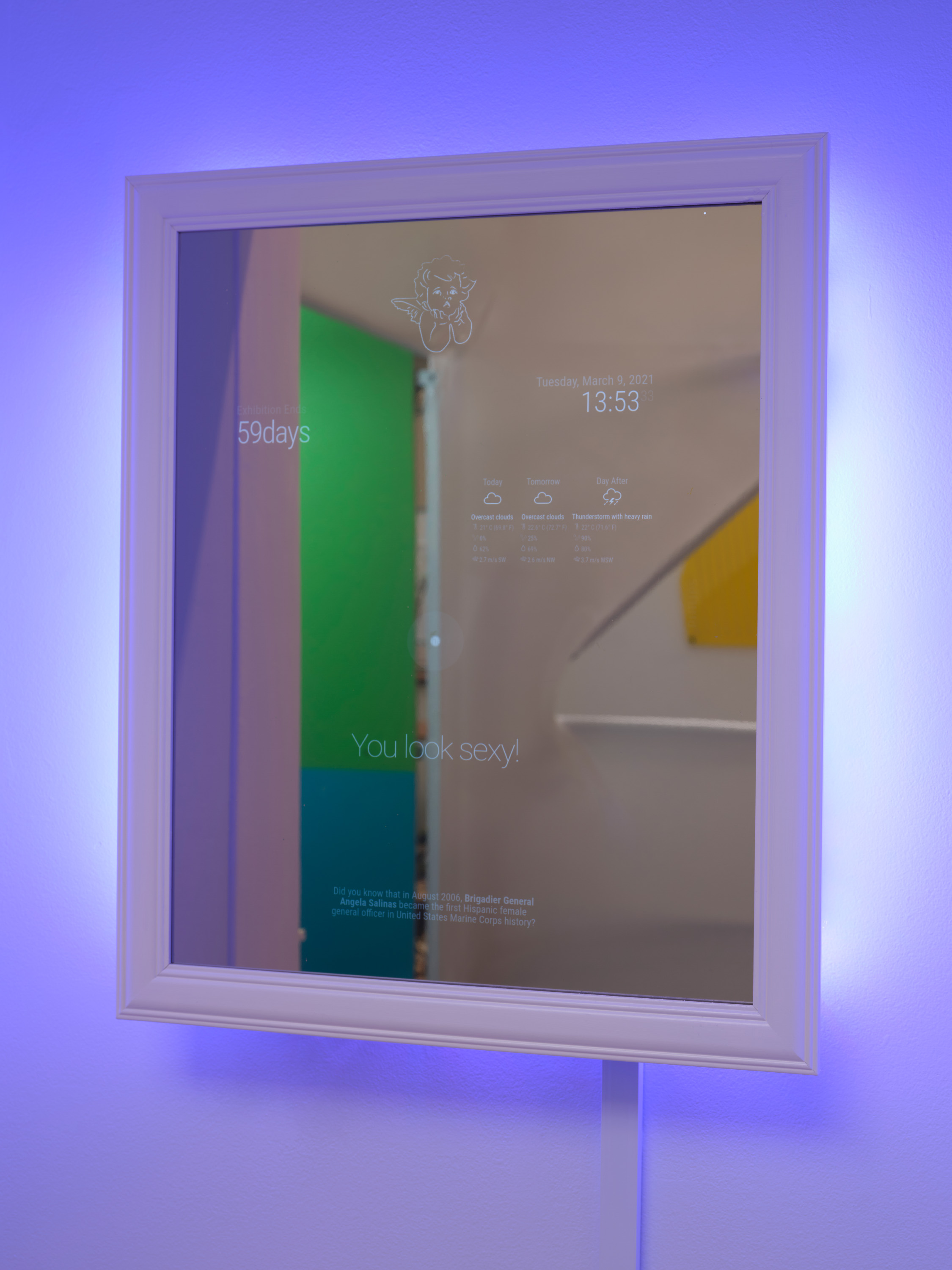This essay was selected by Charles Darwent, the judge of the inaugural Michèle Whitecliffe Art Writing Prize as a runner up. Charles commented: The ‘Wellbeing Complex’ impressed in wearing its learning lightly. The lexicon of critical theory is, or should be, a tool for clarification rather than academic obfuscation. This piece was original in its thinking, beautifully and clearly reasoned, and equally accessible to layman and specialist alike. Its linking of ideas of wellness to political responses to Covid in New Zealand was not just clever but convincing.
Alena Kavka
Article Detail
Wellbeing is a particularly contemporary phenomenon. As a cultural value, it could be considered alongside historical pronouncements of transpersonal virtue, such as piety, charity, or beauty. However, unlike these proclamations of individual ‘goodness’, the notion of wellbeing, and all its associations, is entirely specific to our contemporary moment. As a concept, wellbeing is not a neat, semantic whole, but is split into a raft of associations to do with how wellbeing is understood and instrumentalised in our contemporary moment. To this end, several contemporary New Zealand artists have problematised the notion of wellbeing in their work, including the artist Mark Schroder and the art collective Wellbeing Analysis Techniques Ltd™. In the vein of international art practitioners such as Maryam Jafri, Débora Delmar, and the Institute for New Feeling, these New Zealand artists use installation and assemblage to examine the currency of wellbeing in contemporary life, interrogating the corporate, technological, and governmental underpinnings of the term in a global society characterised by neoliberalised markets and Big Tech. Through their work, wellbeing is revealed to be inextricably intertwined with these larger structural powers – proving that ‘wellbeing’ is not just about ‘being well’.
Wellbeing, as a contemporary concept, is particularly pertinent to our current cultural moment.To begin with, ideas of wellbeing, both personal and collective, have been made especially relevant by the public health crisis that has now gripped the world for over a year. The Covid-19 pandemic has had a profound impact on global life, irrevocably altering the structures of our daily lives, from systems of international travel and trade to individual freedom of movement. The pandemic’s impact has also affected the cultural sphere: 2020 saw the scaling down, if not the outright closure, of numerous art institutions and organisations, many of which fired staff and reduced their collections to cope with the economic constrictions precipitated by pandemic conditions.
All the while, anxieties related to individual wellbeing loomed large in the collective consciousness, manifesting in the forms of compulsive handwashing, mask-wearing, and social distancing (or, perhaps, in the minds of pandemic-deniers, as the complete repudiation of these measures: wellbeing = individual freedom). However, the pandemic also shored up a more collectivised consideration of wellbeing; the year 2020 will be remembered not only as a plague year, but a year of global reckoning with systems of structural inequality. Black Lives Matter protests erupted across the world, defying social distancing and lockdown mandates (wellbeing = ‘we’ve had enough’) to demand that systems of policing finally be recognised for their inherent racial biases. The force of the collective movement propelled this reckoning far beyond questions of policing to encapsulate the structures of inequity embedded into nearly every level of global life. In the art world, museums and art institutions came under particular scrutiny as historical sites of power, exclusion, and colonial exploitation, resulting in various dismissals, deaccessions, and re-hires to more equitably represent the world in which they were operating. The pandemic, in drawing such intense attention to individual health, also revealed the myriad ways in which we are collectively unwell.
The pandemic has also exposed, in stark relief, the extent to which wealth is valued over health. Numerous countries continue to struggle to suppress the spread of the virus among state-led efforts to keep businesses running. In the face of rising infection rates and snap lockdowns, the attempts to maintain pre-pandemic economic operations, much of which are contingent on face-to-face interaction and global trade networks, have spotlighted the global impetus to privilege the economy over public health. With collective demands for social wellbeing, the violent resistance to these calls by counter-groups, and the dogged hesitance of global leaders to stall economic activity in favour of ensuring the health of their constituents, it is safe to say that we find ourselves in a crisis of wellbeing. Together with an intensifying panic over the health of the planet, ‘wellbeing’ is a concept that is both indelibly tied to our contemporary moment and shot through with multiple and fraught connotations.
In addition to this crisis of wellbeing, another contemporary association of wellbeing is the notion of ‘wellness’. The past decade has seen a proliferation of trends and techniques directed towards physical and mental wellbeing, most of which have been monetised in the form of ‘self-care’. The marketing of organic products, lifestyle dieting, fitness trends, and the importation of Eastern mindfulness practices has resulted in a global wellness industry worth upwards of $4 trillion,[i] transforming the individual body into a site of exorbitant expenditure and focus. This iteration of wellbeing, having perhaps resulted from a combination of a secularised society with the rampant individualism of accelerated capitalism, has given rise to what some refer to as a ‘cult of the self’: an individualised and self-focused approach to wellbeing that has laid the foundation for one the world’s most lucrative industries. Here, ‘wellbeing’, rather signifying a relational or collective approach to welfare, is mobilised as a commodity of individual self-realisation.
A consideration of wellbeing in relation to art, thus, is not exempt from these multiple entanglements, which fold into the term concerns regarding politics, economics, and the contemporary self. In Aotearoa New Zealand, notions of wellbeing are particularly tied up with its incumbent Labour government, led by Prime Minister Jacinda Ardern. Considering art and its relationship to wellbeing in a New Zealand context is therefore inseparable from its uses within national and political discourse. In his essay ‘Wellness Versus Art’, art writer and curator Robert Leonard examines the problems of tying art and wellbeing together in ways that elucidate the particularly nationalistic prospects of the project in New Zealand.[ii] Notions of wellbeing have experienced increasing traction in New Zealand’s political sphere since the induction of Ardern’s Labour party in 2017, seeing the centring of the language of kindness and wellbeing in policy-making, most notably with the 2019 Wellbeing Budget and Ardern’s pandemic motto – ‘Be Kind’. Art has also been swept up in this proliferation of wellbeing-signalling in political discourse; as noted by Leonard, art was described by Professor of Education Peter O’Connor as ‘an innovative and cost-effective way to enhance wellbeing’. Similarly, Ardern, in an op-ed for the New Zealand Herald, called for art to be ‘integrated into all areas of New Zealand society’ due to its benefits to mental and cognitive wellbeing, community cohesion, and economic growth.
In his essay, Leonard points out the danger of instrumentalising art as a service for national wellbeing. Not only does it risk turning artists into ‘wellness providers’, and art into a coddling, audience-centred exercise, but it maintains an unsettling proximity to governmental agendas, especially given the currency of ‘kindness’ and ‘wellbeing’ in the liberal New Zealand body politic. Furthermore, framing art as a cost-effective means to achieve wellbeing on a national scale reduces the value of art to question of utility; when the viewing of art is pitched to audiences as a therapeutic activity and understood by the government as an optimisable instrument of public health, art as a wellbeing-enhancing endeavour can operate at the expense of more critical and diverse practices. Significantly, this instrumentalised and optimised approach to art and wellbeing also realigns New Zealand’s national endorsement of wellbeing with the individualising and neoliberal character of the wellness industry. This is wellbeing understood in the terms of metrics, budgets, and policy, much like the monetised, individualised, and commercialised approach to wellbeing heralded by the market.
To the extent that wellbeing operates in tandem with nationalist, political, and commercial drives, several New Zealand artists have critiqued notions of wellbeing as being subsumed into various structures of power and governance. Taking to task the empty signification of wellbeing by corporate entities, Mark Schroder’s Fortune Teller, 2021 acts as a synecdoche of corporate wellness discourse. His largest work to date, Fortune Teller was enacted as a site-responsive commission for the University of Auckland’s Gus Fisher Gallery and stages a commentary on the use of wellbeing initiatives in support of institutional agendas, where the language of wellbeing masks the more exploitative nature of corporate labour.
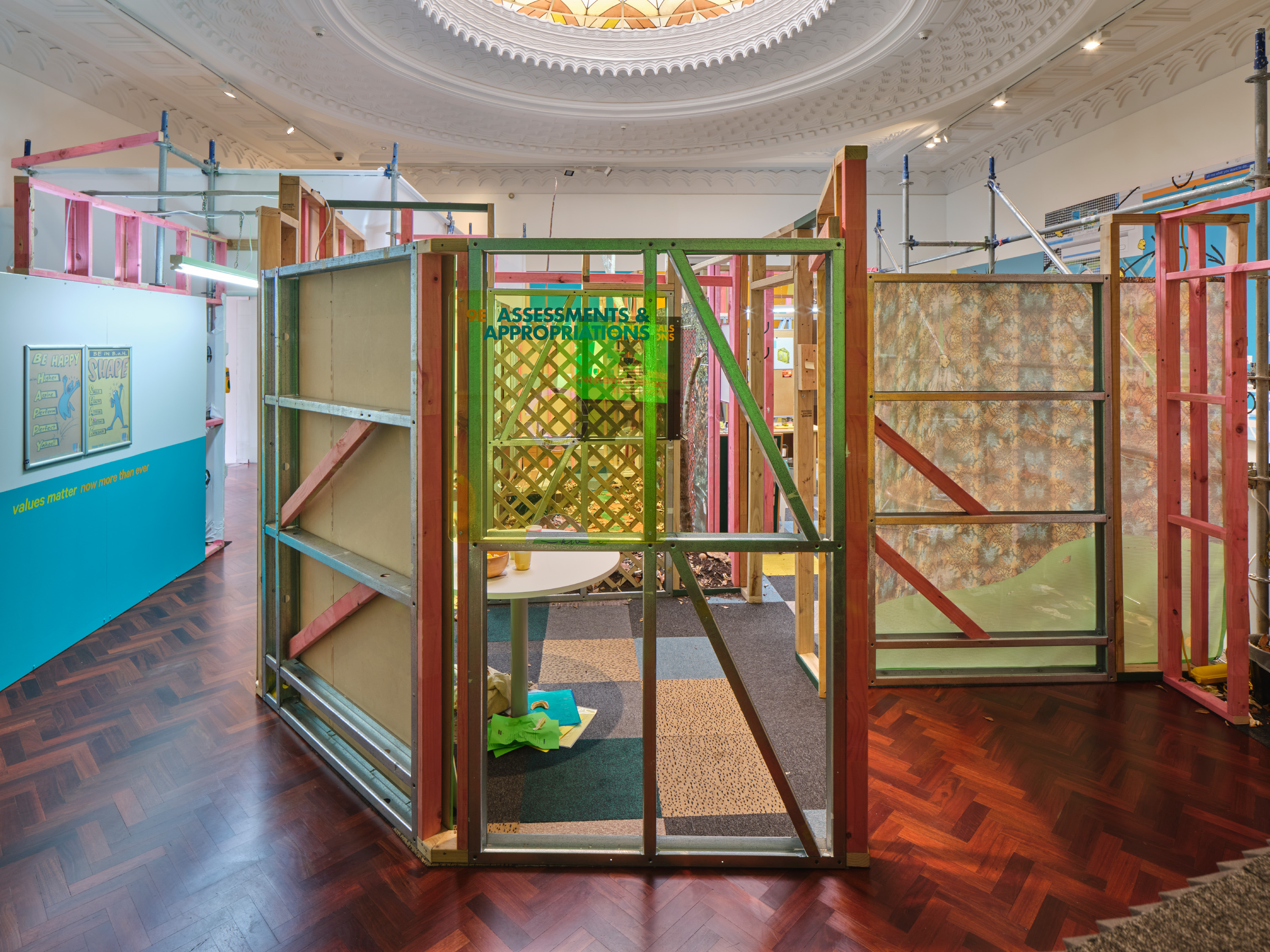
Mark Schroder, Fortune Teller, 2021 (installation view), Gus Fisher Gallery, Auckland. Image courtesy of the artist and Gus Fisher Gallery. Photograph: Sam Hartnett.
Fortune Teller was installed in the Gus Fisher Gallery’s foyer, formerly a reception area for the television studios that once occupied the building’s wings. Schroder, a corporate lawyer by day, was influenced by renovations to the building in 1986, which saw the removal of the foyer’s low ceiling to expose a previously concealed glass dome in efforts to increase the happiness of the studios’ employees.[iii] Seizing on the question of what ‘happiness’ comes to mean in a corporate environment, Fortune Teller – the title of which evokes both a clairvoyant and a clerk (in the sense of ‘bank teller’) of good fortune or happiness – transforms the erstwhile reception space into an ad-hoc administrative hub named the Bureau of Happiness, a fictionalised company that produces affirmational materials for firms and their employees.
The installation is a surreal set, a maze of tarpaulin and prefabricated walls that unfold in no clear order. Viewers navigate through a series of dishevelled ‘offices’, throughout which are plastered the ostensible products of the employee’s labour: aspirational posters, corporate value statements, and stock images of smiling, suited professionals. Of course, there are no employees in sight, and the only palpable traces of their presence belie the motivational tenor of the materials strewn throughout the exhibition: the empty desks, boardroom, and smoking area are littered with rubbish, haphazard arrangements of office ephemera, and de-motivational memos, including such phrases as, ‘Don’t Wait for Failure. Create It’, and ‘Success Doesn’t Happen to You’. Exposing the rift between real employee experience and the nominal values espoused in corporate marketing, the installation reveals a disordered, deteriorating, and apathetic reality behind a façade that proclaims happiness and success.
The Bureau, furthermore, is entirely non-functional; lifelike props turn out to be made from ceramic, rendering office supplies like tape dispensers and telephones into useless items. The rooms, in a state of disarray, do not follow any kind of logical order, and shuffle viewers back and forth without any clear hierarchy with which to view its sections. And as much as the rooms fold in on themselves, so does the vague labour of its employees – the material evidence of their ‘work’ clearly insufficient to fulfill the corporate targets that line the office walls. In this way, Fortune Teller recalls the late anthropologist David Graeber’s thesis of ‘bullshit jobs’, which he claimed exemplified the nature of labour in late-stage capitalist society.[iv] Proposing that much of the paid labour undertaken today is meaningless, Graeber explained that workers are inducted into self-satisfying chains of labour that simply act as a means to their own end, rather than serving any kind of greater social function. Ticking boxes, fulfilling metrics, and middle-managing all fall within the ambit of ‘bullshit jobs’: roles established for no other purpose than to fulfill the gratuitous chain of labour within which they reside.
The disordered nature and non-functionality of the firm reflects the precarity of the Bureau’s raison-d’être, and, more broadly, the absurdity of mobilising wellbeing in the name of corporate outcomes. Not only does Fortune Teller reveal the disjunction inherent in the whitewashing of working reality with tokenistic expressions of wellbeing, but also the meaninglessness inherent in the signification of wellbeing in corporate initiatives, which themselves have become self-satisfying endeavours without any tangible or constructive results.
Wellbeing Analysis Techniques Limited™, an art collective established by New Zealand artists Vanessa Crofskey and Kimmi Rindel, similarly examines wellbeing as construed through discourses of structural power. Referencing both a corporatised and rationalised approach to analysis in the name of the collective, the artists interrogate wellbeing as defined by consumer culture and Big Tech. Where Schroder explored the public face of wellbeing, Crofskey and Rindel mine the implications of wellbeing discourse in our private lives. The work, Now You See Me, 2021, comprises a smart mirror in-built with weather forecasts, flattering affirmations, a rhythmic visualisation intended to aid mindful breathing, and reminders to drink water. A digitally mediated vanity room, Now You See Me has all the markers of the wellness industry – positive self-esteem, plentiful hydration, and mindfulness techniques. Collapsed into a Black Mirror-esque technological invention, it is a dystopic assemblage, save for the fact that the artwork is entirely produced from readily available, present-day technologies – a sign, perhaps, of the most affecting kind of dystopia.
Forging a literal amalgamation of mirror and screen, Now You See Me stages an unsettling vision of a technologically facilitated notion of wellbeing. It is an encounter of two the world’s most lucrative industrial players, wellness and Big Tech, siphoned directly into the private and psychologically fraught space of self-image. Raising questions of control and surveillance in the domestic space, at a time when private data has become Big Tech’s most valuable asset, Now You See Me also models the increasing export of the body’s regulatory functions to technological prostheses. This elision of body and technology, and its myriad entanglements with corporate interests, transforms ideas of personal wellbeing into mandates with corporate-consumer agendas, introjecting capitalistic needs for self-maintenance directly into the body. This not only raises the issue of technology instilling within itself its own antidote (none so self-evident as Apple’s persistent tracking of users’ ‘Screen Time’ – buy this phone so it can encourage you to be less attached to it), but also the utility of self-improvement, and its attendant notions of self-care, to a neoliberalised marketplace.
In her essay ‘Always Be Optimizing’, Jia Tolentino explains that the endless workday of accelerated capitalism, its detachment from a physical site of work now exacerbated by the increase in remote working, benefits from the continually optimising self.[v] Not only does a commodified understanding of wellbeing capitalise on our fundamental desire for personal welfare, transforming our wishes for good health and happiness into consumer wants, but it also displaces the burden of care from social and institutional providers to the individual. Free from the responsibility of ensuring the health of their employees, such institutions benefit from the intense self-focus fostered by the wellness industry, which ensures that individual wellbeing is an individual’s responsibility alone. The self that seeks to be at its healthiest, fittest, and most efficient requires maintenance that does not interrupt the production of labour, but instead has become both absorbed as part of its profit-making machinery and part of its aesthetic. Now You See Me quite literally reflects the role of the individual in this kind of techno-capitalism: to see your own self mirrored in the technology you use is a sign of algorithmic success.
By demonstrating the ways in which notions of wellbeing are implicated in corporate, technological, and commercial discourses, Schroder’s Fortune Teller and Wellbeing Analysis Techniques Limited™’s Now You See Me shine a light onto the ways in which the concept of wellbeing operates today. Rather than acting as an exclusive signifier of physical and mental welfare, wellbeing is tied up in a host of other meanings and structural imperatives, complicating earnest attempts at conceptualising notions of wellness. How then to conceive of wellbeing or wellness in the sense of the German wohlfühlen – literally, to feel well? If the past year is anything to go by, we are already in the process of a thorough and collective engagement with what feeling or being well really means. It is up to us, and our continuing calls for collective action, if we can imagine wellness into being.
[i] Global Wellness Institute, ‘Wellness Industry Statistics & Facts’, 28 July 2021, https://globalwellnessinstitute.org/press-room/statistics-and-facts/, accessed 30 July 2021.
[ii] Robert Leonard, ‘Wellness versus Art’, 2021, https://robertleonard.org/art-versus-wellness/, accessed 30 July 2021.
[iii] happiness is only real when shared, Gus Fisher Gallery, Auckland, 2021, https://cpb-ap-se2.wpmucdn.com/blogs.auckland.ac.nz/dist/e/421/files/2021/03/happiness-is-only-real-when-shared_-artwork-text.pdf, accessed 30 July 2021.
[iv] David Graeber, Bullshit Jobs: A Theory, Allen Lane, London, 2018.
[v] Jia Tolentino, ‘Always Be Optimizing’, in Trick Mirror: Reflections on Self-Delusion, Harper Collins, London, 2019.
